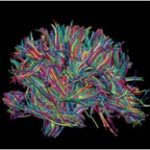Our latest study on the benefits of Early Caucus has been published on line: “Can early caucus improve a community mediation model? Counteracting stressors prior to joint session.” It is available at https://onlinelibrary.wiley.com/journal/15411508 or you may contact me directly at jtanz@chicagomediation.com for a copy of the manuscript. The paper describes a three part study of a short [Read more..]
Mediation Myth Busters
Article available on mediate.com
My article, “Using Neuroscience to Understand Stress and Improve Mediation,” is now available publicly: https://www.mediate.com/articles/tanz-using-neurocience.cfm
Using Journaling as a Mediation Tool
Using Journaling as a Mediation Tool Many psychological and neuroscience studies have shown that expressive writing can be an effective way to reduce stress. Mediators can take advantage of this knowledge to help reduce the parties’ stress before or during a mediation session. What is expressive writing? Expressive writing is simply writing down personal thoughts, [Read more..]
New Article Published on Stress and Mediation
Read my latest summary article on Stress and Mediation published in Just Resolutions Newsletter, November 2018: Using Neuroscience to Understand Stress and Improve Mediation
The Myth of the Triune Brain
The brain is often described as divided into three parts: the “reptilian brain” that controls instincts, the “limbic system” that controls emotions, and the neocortex that controls rational thought. The classic view is that rational thought of the neocortex controls the “lower” reptilian and emotional brains. Currently neuroscientists think of the brain as a [Read more..]
How to Handle Strong Emotions
Mediators face strong emotions all the time. We can view these emotions as the most challenging part of the job or see them as a window into the conflict. Neuroscience can help us cope with the challenges and take advantage of the opportunities. We have discussed the inherent problems in venting during mediation in a prior [Read more..]
Countering Implicit Bias
In our last post we looked at the definition of implicit bias and why it is present. Now we will look at ways to counter implicit bias. Reducing Implicit Bias One scientific study reduced implicit bias over a period of at least two months (PG Devine, et al., “Long-term reduction in implicit race bias: A [Read more..]
Understanding Implicit Bias
We recently presented a program at the American Bar Association Dispute Resolution Section Spring Conference on the Neuroscience of Implicit Bias. The presentation included a brief overview about implicit bias, a discussion of how and why implicit bias exists, how it can impact mediation and the neuroscience of implicit bias. We concluded with ideas to [Read more..]
Early Caucus: Dealing with Stress in Mediation
Traditional facilitative mediation has long been structured as: 1) Joint session, 2) Caucus, 3) Joint session (with additional rounds as necessary). This structure is often found in community mediation settings and was once common in commercial mediation. In recent years, commercial mediation often skips the opening joint session and frequently is conducted entirely in caucus. This change [Read more..]
The Venting Myth
Mediation training has long viewed venting anger as a useful tool for restoring a positive psychological state. This practice has been handed down as received wisdom through several generations of mediation trainers, practitioners, and theorists. Beware, this venting myth can be dangerous Venting negative emotions triggers the physiologic stress response by increasing the level of the [Read more..]

